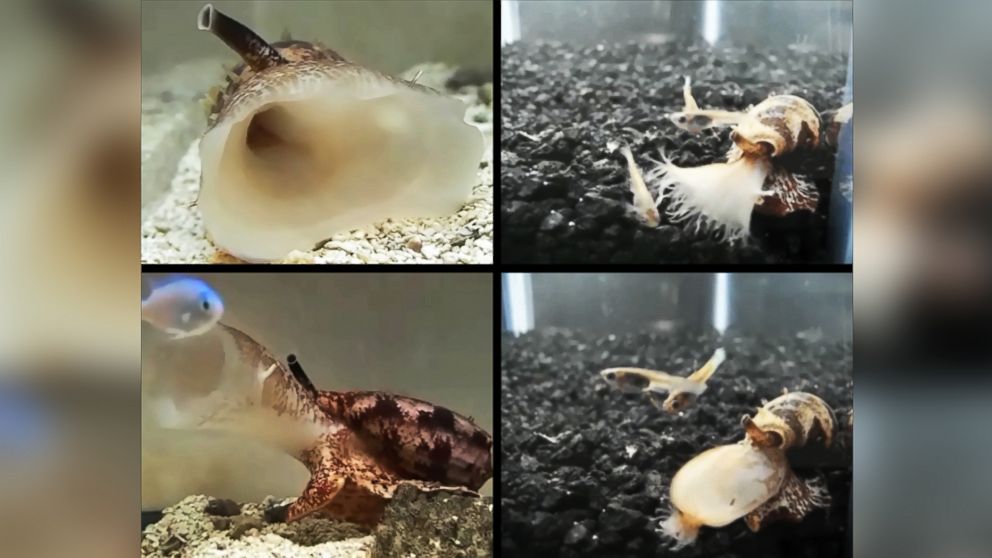Sea Snail's Weird Hunting Method Sheds New Light on Insulin
Fish get sluggish after hit with snail's venom.

— -- The questionably cute but slimy sea snail has a secret weapon for capturing its prey, scientists have discovered.
The cone snails have a have a high level of insulin in their venom that allow them to render small schools of fish sluggish by either shooting the potent venom into the water or via a harpoon-like sting.
Next, the sluggish snails can then catch up to their prey and feast, according to a study from researchers at the University of Utah that was published in the Proceedings of the National Academy of Sciences.
Scientists tested a synthetic version of the insulin on zebrafish and found that it caused blood glucose levels to fall and created a noticeable change in the swimming behavior of the fish.
"This is a unique type of insulin. It is shorter than any insulin that has been described in any animal," Baldomero Olivera, a biology professor and an author of the study, said in a statement. "We found it in the venom in large amounts."
The insulin has just 43 amino acid building blocks, making it shorter than any other known insulin, researchers said, noting that when the insulin mixes with venom, it creates a cocktail that is able to quickly slow down schools of fish and put them in hypoglycemic shock.
Aside from the ick and cool factors of the discovery, researchers said it could also be used to help them better understand how energy is metabolized in humans.




